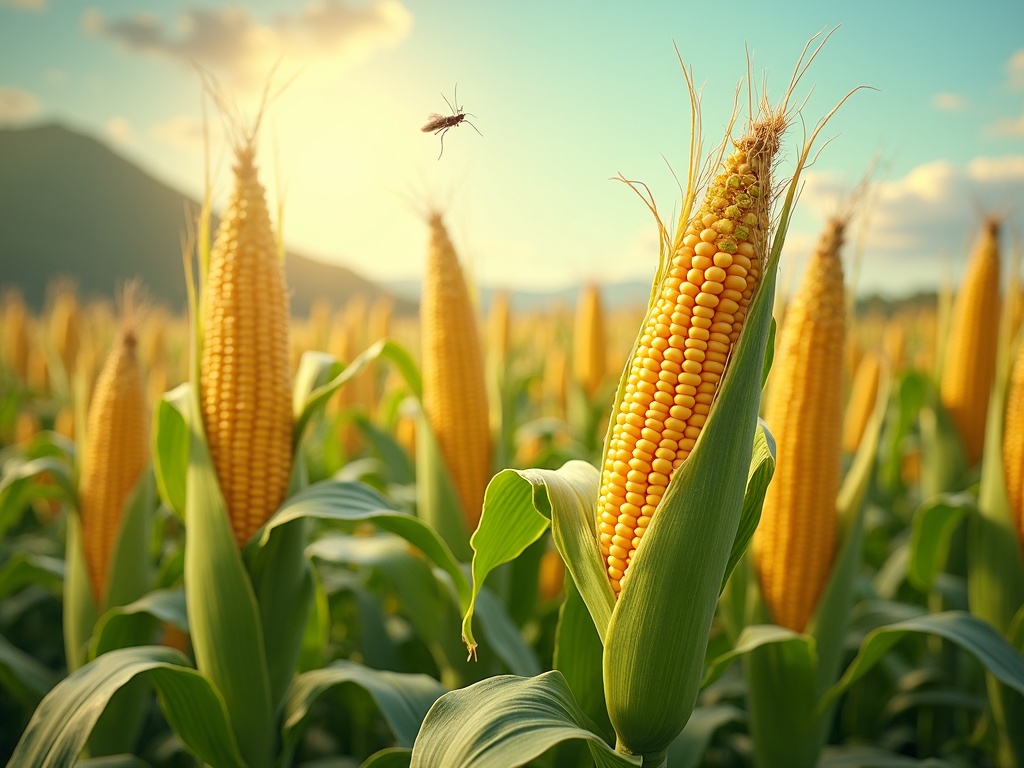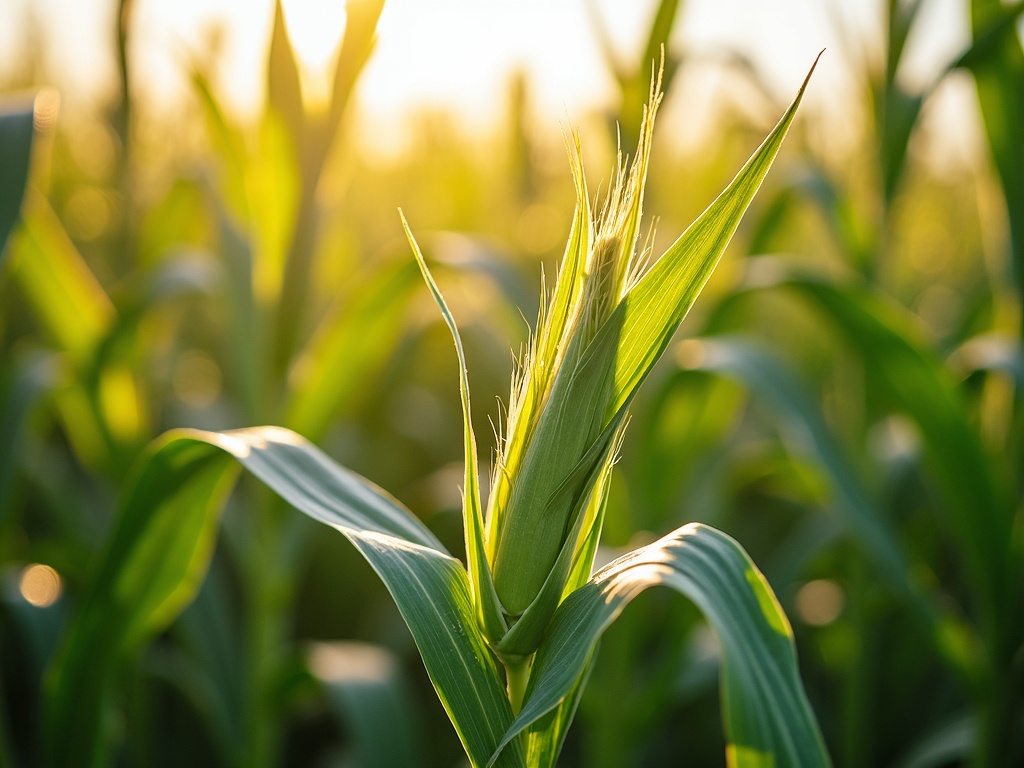How to Protect Corn From Pests: A Comprehensive Guide
Imagine rows upon rows of vibrant green corn stalks, their leaves rustling gently in the breeze, promising a bountiful harvest. Now, picture that idyllic scene marred by the telltale signs of pest infestation: withered leaves, damaged kernels, and a significantly reduced yield. Protecting your corn crop from pests is not merely a matter of good farming practice; it's an economic imperative, a safeguard against food insecurity, and a cornerstone of sustainable agriculture. This comprehensive guide will equip you with the knowledge and strategies you need to defend your cornfields against a wide array of pests, ensuring a healthy and profitable harvest.
Understanding the Threat: Common Corn Pests
Before you can effectively protect your corn, you must first understand the enemy. A diverse range of insects and other pests can attack corn at various stages of its growth, from seedling to mature plant. Identifying the specific pests present in your field is crucial for implementing targeted control measures.
Above-Ground Pests
These pests feed on the leaves, stalks, and ears of the corn plant.
- Corn Earworm (Helicoverpa zea): A notorious pest, the corn earworm attacks the ear of the corn, feeding on the silks and kernels. This can lead to significant yield loss and make the ears susceptible to fungal infections. Look for entry holes in the silks and larvae feeding inside the ear.
- Fall Armyworm (Spodoptera frugiperda): This voracious pest can cause widespread damage, particularly to young corn plants. The larvae feed on leaves, creating ragged holes and potentially defoliating entire plants. Infestations can quickly escalate, so early detection is critical.
- European Corn Borer (Ostrinia nubilalis): The larvae of this moth bore into the stalks and ears of corn, disrupting nutrient flow and weakening the plant. This can lead to stalk breakage and reduced ear size. Look for small entry holes in the stalks and signs of frass (insect excrement).
- Armyworm (Mythimna unipuncta): Similar to the Fall Armyworm, the Armyworm can cause significant defoliation, especially in seedling corn. They are often found in large numbers, hence the name armyworm.
- Aphids: These small, sap-sucking insects can weaken plants and transmit diseases. They are often found in colonies on the undersides of leaves and can cause yellowing and distorted growth.
- Japanese Beetle (Popillia japonica): Adult Japanese beetles feed on corn silks, interfering with pollination and kernel development. They can also damage leaves, though this is generally less of a concern.
- Corn Leafhopper (Dalbulus maidis): This insect transmits the corn stunt disease, which can severely stunt plant growth and reduce yield.
Below-Ground Pests
These pests attack the roots and developing seeds of the corn plant.
- Corn Rootworm (Diabrotica spp.): A major pest of corn, corn rootworm larvae feed on the roots, weakening the plant and making it susceptible to lodging (falling over). Adult beetles feed on silks and leaves. Crop rotation is a key management strategy for this pest.
- Wireworms: These slender, wire-like larvae feed on seeds and roots, preventing germination and stunting growth. They are more prevalent in fields with a history of grassy weeds.
- White Grubs: The larvae of various beetle species, white grubs feed on roots, causing similar damage to wireworms.
- Seedcorn Maggot (Delia platura): This pest attacks germinating seeds, preventing them from sprouting. Cool, wet conditions favor seedcorn maggot infestations.
Integrated Pest Management (IPM): A Holistic Approach
The most effective way to protect your corn from pests is through Integrated Pest Management (IPM). IPM is a sustainable, science-based approach that focuses on preventing pest problems and using multiple control tactics to minimize pesticide use. The key components of IPM include:
1. Prevention
Prevention is always better (and cheaper) than cure. Proactive measures can significantly reduce the risk of pest infestations.
- Crop Rotation: Rotating corn with non-host crops (e.g., soybeans, alfalfa) can break pest cycles, particularly for corn rootworm. This deprives the pests of their primary food source, reducing their population.
- Resistant Varieties: Plant corn varieties that are resistant to specific pests, such as corn rootworm or European corn borer. These varieties often contain genes that produce insecticidal proteins, such as those derived from Bacillus thuringiensis (Bt). However, it's important to follow resistance management strategies to prevent pests from developing resistance to these proteins.
- Healthy Soil: Healthy soil promotes strong plant growth, making corn more resilient to pest attacks. Ensure adequate soil fertility, drainage, and organic matter content. Soil testing can help determine nutrient deficiencies and guide fertilization practices.
- Weed Control: Weeds can serve as alternate hosts for pests and compete with corn for resources. Implement effective weed control strategies, including herbicides, cultivation, and cover crops.
- Sanitation: Remove crop residue after harvest to eliminate overwintering sites for pests. Tillage can help bury crop residue and reduce pest populations.
- Proper Planting Time: Plant corn at the optimal time for your region to ensure rapid germination and seedling growth, which can help plants outgrow early-season pest pressure.
2. Monitoring and Scouting
Regularly monitor your fields for pests and signs of damage. Early detection is crucial for implementing timely control measures.
- Regular Field Inspections: Walk through your fields at least weekly, paying close attention to leaves, stalks, and ears. Look for signs of feeding damage, insect presence, and disease symptoms.
- Pheromone Traps: Use pheromone traps to monitor the presence and abundance of specific pests, such as corn earworm and European corn borer. These traps attract male moths using synthetic pheromones, allowing you to track their flight activity and predict potential infestations.
- Sweep Nets: Use sweep nets to sample for insects in the foliage. This is particularly useful for monitoring populations of aphids, leafhoppers, and other small insects.
- Record Keeping: Keep detailed records of pest sightings, damage levels, and control measures taken. This information will help you make informed decisions about future pest management strategies.
- Economic Thresholds: Understand the economic thresholds for key pests. An economic threshold is the pest density at which control measures are justified to prevent economic losses. Treatment decisions should be based on economic thresholds, not simply on the presence of pests.
3. Cultural Controls
Cultural controls involve modifying farming practices to make the environment less favorable for pests.
- Tillage: Tillage can disrupt the life cycles of some pests, such as corn rootworm and European corn borer. However, excessive tillage can also have negative impacts on soil health, so it should be used judiciously.
- Water Management: Proper irrigation and drainage can help prevent pest problems. Waterlogged soils can favor certain pests, while drought stress can weaken plants and make them more susceptible to attack.
- Nutrient Management: Balanced nutrient levels are essential for healthy plant growth and pest resistance. Soil testing can help determine nutrient deficiencies and guide fertilization practices.
- Trap Cropping: Planting a small area of a more attractive crop near your cornfield can draw pests away from the main crop. For example, planting early-maturing corn can attract corn earworm moths, reducing their egg-laying on the main corn crop.
4. Biological Controls
Biological control involves using natural enemies of pests to suppress their populations.
- Beneficial Insects: Encourage the presence of beneficial insects, such as lady beetles, lacewings, and parasitoid wasps, which prey on or parasitize corn pests. Avoid using broad-spectrum insecticides that can harm these beneficial insects.
- Bacillus thuringiensis (Bt): Bt is a naturally occurring bacterium that produces insecticidal proteins. Bt products are available as sprays or as transgenic corn varieties that express Bt proteins in their tissues. Bt is effective against many corn pests, including European corn borer and corn earworm.
- Nematodes: Certain species of nematodes are parasitic to insects and can be used to control soil-dwelling pests, such as corn rootworm and white grubs.
- Fungi: Entomopathogenic fungi, such as Beauveria bassiana, can infect and kill insects. These fungi are available as biopesticides and can be applied to foliage or soil.
5. Chemical Controls
Chemical insecticides should be used as a last resort and only when necessary, based on economic thresholds and careful consideration of the potential impacts on beneficial insects and the environment.
- Targeted Applications: Choose insecticides that are specific to the target pest to minimize harm to non-target organisms.
- Proper Timing: Apply insecticides at the correct time in the pest's life cycle to maximize effectiveness. For example, insecticides are most effective against young larvae.
- Resistance Management: Rotate insecticides with different modes of action to prevent pests from developing resistance. Avoid using the same insecticide repeatedly.
- Scouting After Application: Scout the field even after applying insecticides to ensure efficacy and observe if further treatment is needed.
- Follow Label Instructions: Always follow the label instructions carefully when using any pesticide. The label provides important information on application rates, safety precautions, and environmental hazards.
Specific Pest Control Strategies
Now, let's delve into specific strategies for managing some of the most common corn pests.
Corn Earworm Control
- Resistant Varieties: Plant corn varieties with tight husks that are less susceptible to earworm damage.
- Insecticides: Apply insecticides to the silks when earworm moths are active and eggs are hatching. Pyrethroid insecticides are commonly used, but resistance has been reported in some areas. Consider using alternative insecticides with different modes of action.
- Biological Control: Release beneficial insects, such as parasitic wasps, that attack earworm eggs and larvae.
- Oil Application: Applying mineral oil to the silks can disrupt earworm feeding and prevent damage.
Fall Armyworm Control
- Early Planting: Planting early can help corn plants outgrow early-season armyworm infestations.
- Insecticides: Apply insecticides when larvae are small and actively feeding. Pyrethroids and spinosad insecticides are effective against armyworms. Systemic insecticides can be used as seed treatments for early-season control.
- Biological Control: Encourage the presence of beneficial insects, such as parasitic wasps and predatory beetles, that attack armyworm larvae.
European Corn Borer Control
- Resistant Varieties: Plant Bt corn varieties that are resistant to European corn borer.
- Tillage: Plowing under crop residue can reduce overwintering populations of corn borers.
- Insecticides: Apply insecticides when larvae are hatching and entering the stalks. Granular insecticides can be applied to the whorl of the plant.
- Biological Control: Release parasitic wasps that attack corn borer larvae.
Corn Rootworm Control
- Crop Rotation: Rotate corn with non-host crops, such as soybeans, to break the rootworm life cycle.
- Resistant Varieties: Plant Bt corn varieties that are resistant to corn rootworm.
- Insecticides: Apply soil insecticides at planting to control rootworm larvae. Foliar insecticides can be used to control adult beetles and prevent egg-laying.
- Nematodes: Apply entomopathogenic nematodes to the soil to control rootworm larvae.

The Importance of Monitoring and Record Keeping
Effective pest management is an ongoing process that requires continuous monitoring and careful record keeping. By tracking pest populations, damage levels, and control measures, you can gain valuable insights into the effectiveness of your pest management strategies and make informed decisions about future actions.
Key Records to Keep:
- Planting Date and Variety: Track the planting date and variety of corn planted in each field. This information can help you assess the performance of different varieties and identify potential pest problems associated with specific planting dates.
- Pest Sightings: Record all pest sightings, including the date, location, pest species, and estimated population density.
- Damage Assessments: Regularly assess the level of damage caused by pests, noting the type of damage, the percentage of plants affected, and the severity of the damage.
- Control Measures: Document all control measures taken, including the type of insecticide used, the application rate, the date of application, and the weather conditions at the time of application.
- Yield Data: Collect yield data from each field to assess the impact of pests on crop production.
Using Records to Improve Pest Management:
By analyzing these records, you can identify trends, patterns, and potential problems. For example, you may discover that certain fields are consistently more susceptible to specific pests, or that certain control measures are more effective than others. This information can help you tailor your pest management strategies to the specific needs of your farm and improve your overall pest control program.
The Role of Technology in Pest Management
Advanced technologies are transforming pest management, enabling farmers to monitor fields more efficiently and make more informed decisions.
Remote Sensing:
Drones and satellites equipped with multispectral and hyperspectral cameras can capture detailed images of cornfields, allowing for the early detection of pest infestations and stress symptoms. These images can be analyzed to identify areas of the field that require attention, allowing for targeted scouting and treatment.
Precision Agriculture:
Precision agriculture technologies, such as variable rate applicators, allow for the precise application of insecticides based on the specific needs of different areas within a field. This can reduce pesticide use and minimize environmental impacts.
Data Analytics:
Data analytics platforms can integrate data from multiple sources, including weather data, soil data, pest monitoring data, and yield data, to provide farmers with a comprehensive understanding of their fields and help them make data-driven decisions about pest management.
Smartphone Apps:
Smartphone apps are available that can help farmers identify pests, assess damage, and access information on pest management strategies. These apps can also be used to record pest sightings and damage assessments, making it easier to track pest populations and evaluate the effectiveness of control measures.
Looking Ahead: Future Trends in Corn Pest Management
The future of corn pest management will likely be shaped by several key trends.
Increased Use of Biological Controls:
As concerns about the environmental impacts of pesticides grow, farmers will increasingly rely on biological control methods, such as beneficial insects, nematodes, and biopesticides, to manage corn pests.
Development of New Resistant Varieties:
Plant breeders will continue to develop new corn varieties that are resistant to a wider range of pests. New technologies, such as gene editing, may accelerate the development of resistant varieties.
Improved Monitoring Technologies:
New monitoring technologies, such as automated insect traps and remote sensing systems, will enable farmers to detect pest infestations earlier and more accurately.
Integration of Data and Analytics:
Data analytics platforms will become increasingly sophisticated, providing farmers with a holistic view of their fields and helping them make more informed decisions about pest management.
Conclusion
Protecting corn from pests is a complex and ongoing challenge. However, by understanding the pests that threaten your crop, implementing an integrated pest management program, and staying informed about the latest technologies and strategies, you can minimize pest damage, protect your yields, and contribute to a more sustainable agricultural system. Remember that a proactive, preventative approach is always the most effective way to manage pests and ensure a healthy and profitable corn harvest. By embracing a holistic approach that combines prevention, monitoring, cultural practices, biological controls, and judicious use of chemical controls, you can create a resilient and thriving corn crop. Your investment in knowledge and proactive measures will not only safeguard your yields but also contribute to a more sustainable and environmentally responsible agricultural future.

